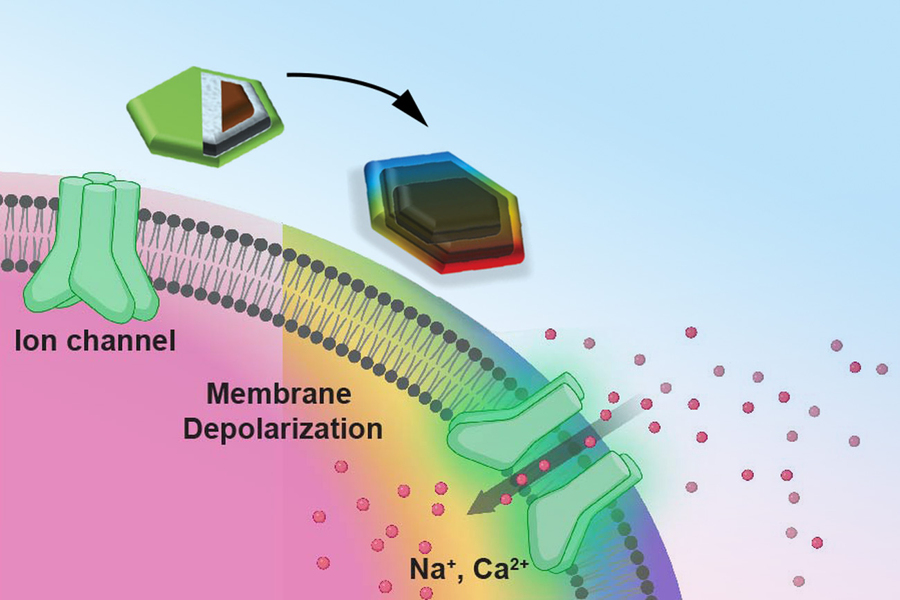
Ye Ji Kim, Noah Kent, Emmanuel Vargas Paniagua, Nicolette Driscoll, Anthony Tabet, Florian Koehler, Elian Malkin, Ethan Frey, Marie Manthey, Atharva Sahasrabudhe, Taylor M. Cannon, Keisuke Nagao, David Mankus, Margaret Bisher, Giovanni de Nola, Abigail Lytton-Jean, Lorenzo Signorelli, Danijela Gregurec & Polina Anikeeva
doi: 10.1038/s41565-024–01798‑9
Abstract:
Deep brain stimulation with implanted electrodes has transformed neuroscience studies and treatment of neurological and psychiatric conditions. Discovering less invasive alternatives to deep brain stimulation could expand its clinical and research applications. Nanomaterial-mediated transduction of magnetic fields into electric potentials has been explored as a means for remote neuromodulation. Here we synthesize magnetoelectric nanodiscs (MENDs) with a core–double-shell Fe3O4–CoFe2O4–BaTiO3 architecture (250 nm diameter and 50 nm thickness) with efficient magnetoelectric coupling. We find robust responses to magnetic field stimulation in neurons decorated with MENDs at a density of 1 µg mm−2 despite individual-particle potentials below the neuronal excitation threshold. We propose a model for repetitive subthreshold depolarization that, combined with cable theory, supports our observations in vitro and informs magnetoelectric stimulation in vivo. Injected into the ventral tegmental area or the subthalamic nucleus of genetically intact mice at concentrations of 1 mg ml−1, MENDs enable remote control of reward or motor behaviours, respectively. These findings set the stage for mechanistic optimization of magnetoelectric neuromodulation towards applications in neuroscience research.
